

Instructional Strategies – For the Teachers. We know that students learn best when they are truly engaged in what they are learning, when they have the opportunity to explore, debate, discuss, examine, defend, and experiment with the concepts and skills they are ready to learn.
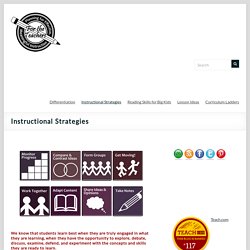
Students learn best when instruction is: Appropriately Challenging Kids (and adults!) Learn best when they start at their current level of understanding and are challenged – with support (teacher, peers, materials, etc.) – just beyond what they are comfortable doing on their own. (See Zone of Proximal Development)The student’s background knowledge and current skill level are more important than their age/grade level in determining what they are ready to learn. ENFJ Personality (“The Protagonist”) 19 Big and Small Classroom Management Strategies.
The year I started teaching seventh- to 12th-grade English in Minneapolis, Prince launched his song about urban ruin, “Sign o’ the Times.”
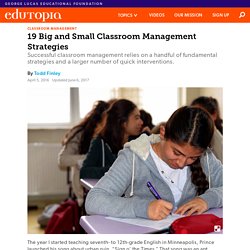
That song was an apt musical backdrop for the lives of my students, most of whom lived in poverty and challenged me daily. That year also afforded me the opportunities to be assaulted with a stone, two chairs, a Rambo knife, a seventh-grade girl’s weak jab, and dozens of creative swear words. Fortunately, classroom order improved when I learned that successful classroom management depends on conscientiously executing a few big strategies and a lot of little ones. Big Strategies: Fundamental Principles of Classroom Management.
The Sticky System – A Teacher’s Hat. I used to be a teaching assistant for an Undergraduate level Computing Science class in a computer lab.
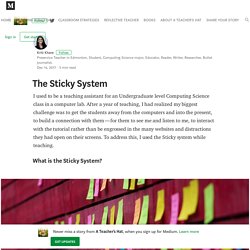
After a year of teaching, I had realized my biggest challenge was to get the students away from the computers and into the present, to build a connection with them — for them to see me and listen to me, to interact with the tutorial rather than be engrossed in the many websites and distractions they had open on their screens. To address this, I used the Sticky system while teaching. What is the Sticky System? Online Programs for Children with Anxiety. Researchers conduct study on Assassin's Creed educational mode, Discovery Tour - Classcraft Blog. A professor and other researchers at the University of Montreal have tested out Assassin’s Creed Origins’ “Discovery Tour,” an educational mode that enables players to explore the historical game world in a museum-like context.
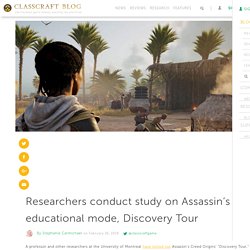
The Discovery Tour, which features 75 audio-guided interactive tours designed by historians and Egyptologists, launched with the video game Assassin’s Creed Origins last October for home consoles and PC. Professor Marc-André Éthier tried the mode with nearly 300 high school students across eight schools and 40 classes. Classcraft. Ldapps. Wayback Machine. Donor challenge: A generous supporter will match your donation 3 to 1 right now.

Triple your impact! Dear Wayback Supporter, We ask you only once a year: please help the Internet Archive today. You may not know it, but we’re an independent, non-profit website that the entire world depends on. We protect reader privacy. We ask you only once a year: please help the Internet Archive today. French_revolution_project. Draw, choose, write or say: Fantastic formative assessments. The Right Way to Show Movies in Class. I like to think of myself as a proponent of using multimedia in the classroom to better engage students in the curriculum.

I’ve amassed a large collection of movies from youtube, teachertube, itunes podcasts, and commercial DVDs that I show in frequent short bursts in the classroom with adults and children to help make my points and show visual examples of what I’m talking about. I think it’s time to clarify how to show movies effectively. 1. Showing movies in class should not be a Friday fun day activity. Discussion Questions and Projects for Use With Any Film that is a Work of Fiction. Note: In some of the questions we have used the term "major characters.

" Before asking the questions, have the class identify the major characters. In addition, these questions can also be limited to one or more characters. Characterization is delineated through: (1) the character's thoughts, words, speech patterns, and actions; (2) the narrator's description; and (3) the thoughts, words, and actions of other characters. When students analyze character, they should be reminded to have these three sources in mind. Adapted from California English-Language Arts Content Standards - Grade 7, Reading 3.3. 9 Events that led to the American Revolution. Free Worksheets - Guitar Tuition for Beginners. Lesson plans & curriculum guides: PDP guide. Search the Library Catalogue, using the keyword lesson plan or teacher guide Here are some examples of resources containing ideas or materials for lesson planning:
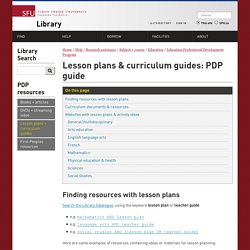
Art Education Beyond the Classroom: Pondering the Outsider and Other Sites ... - A. Wexler. Edutopia stw replicatingPBL 21stCAcad reflection questions. Home. Teaching Math With Art. Teaching math with art is an excellent strategy.

Demonstrate learning. 72 Creative Ways for Students to Show What They Know - Minds in Bloom. An Online Resource for Art Teachers. Free Reading Worksheets. Mo's Page. Ways not to kill classroom creativity. Eleven Classroom Creativity Killers Marvin Bartel - © 2001, updated March 24, 2015.
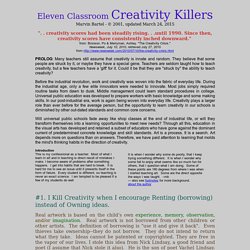
Subjects > Primary Cross-curriculum. BUffalo Pound Education Package 2014. Videos, Common Core Resources And Lesson Plans For Teachers: Teaching Channel.